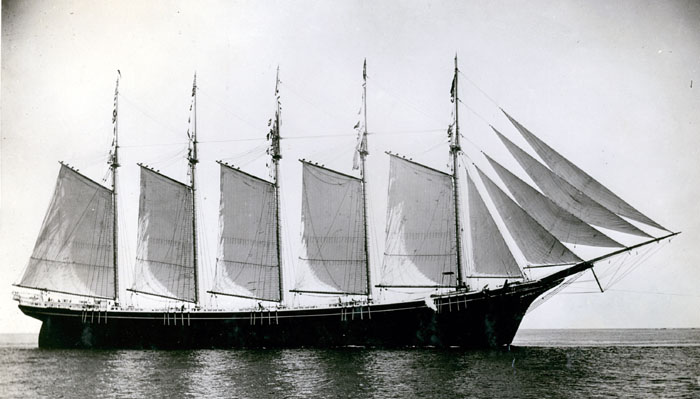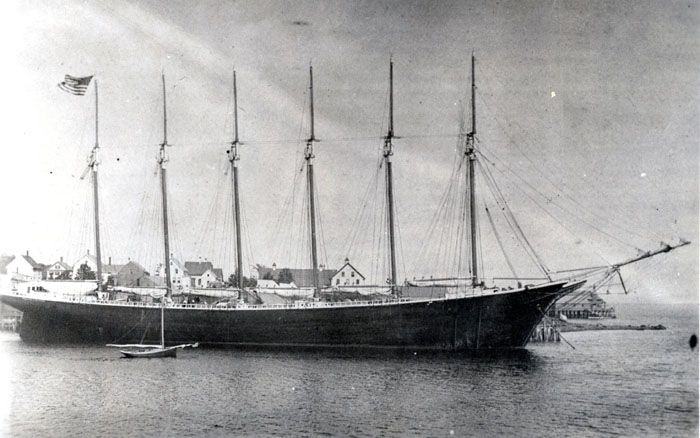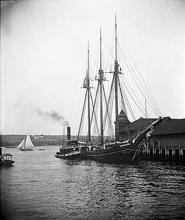The Great Coal Schooners
Down EastersDown Easter downeaster; down-easter
Merchant sailing ship developed in Maine in the 19th century and designed for maximum carrying capacity with minimal crew size.
Read more had to compete against foreign shipping, but domestic shipping was a legally protected trade. Beginning in the 1870s, coal shipped from the Delaware River and the Hampton Roads area of the Chesapeake Bay encouraged the building of larger and larger schoonersSchooner
A sailing vessel of two or more masts, all fore-and-aft rigged. The Thomas W. Lawson, built in 1902, had seven masts. In comparison to a square-rigged vessel of comparable tonnage, a schooner is better for coastwise sailing.. Three-masted schooners had long been the primary means of transporting coal to Boston and Maine, but, by the 1880s, the four-masted schooner had become more popular. The late 1890s saw five-masted schooners, and the first six-masted schooner, George W. Wells, was built in Camden, Maine in 1900.
By 1910, 45 five-masted schooners and 10 six-masted schooners, each the length of a football field, had been built, mostly by Maine shipyards. Bath was their primary builder, but many were built in Rockland, Camden, Belfast, and other Penobscot Bay towns.
These Maine-built schooners, owned both locally and by out of state coal shippers, were more efficient in the domestic coal trade than square-riggedSquare-rigged
The arrangement of sails in a vessel where the main driving sails are laced to yards lying square to the mast. It is the oldest type of known rig. Such a vessel is called a square rigger. Down Easters would have been. They required a much smaller crew, could be built at lower cost, and sailed better in the prevailing winds along shore. While most schooners shipped coal along the eastern seaboard, some carried cargoes to Europe. Like the Down Easters, coal schooners eventually succumbed to competition from steam colliersCollier
Vessel designed specifically to carry coal. Some were designed so that coal could be transferred to other ships directly., though not without a fight. Some continued to work, as the economy permitted, into the 1920s. In the end, they couldn’t compete with steamers, barges, and the railroads.



